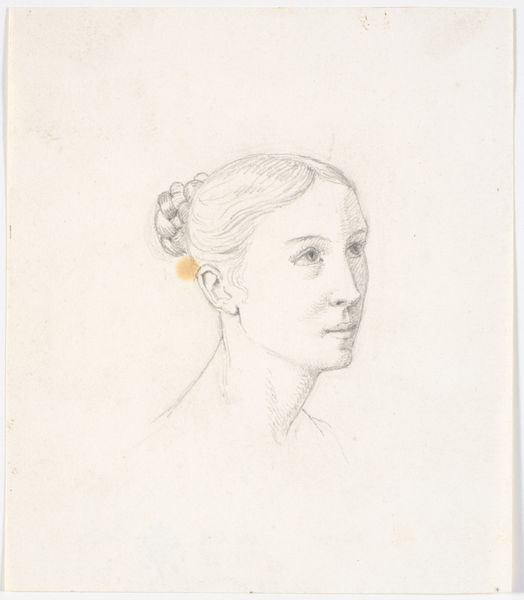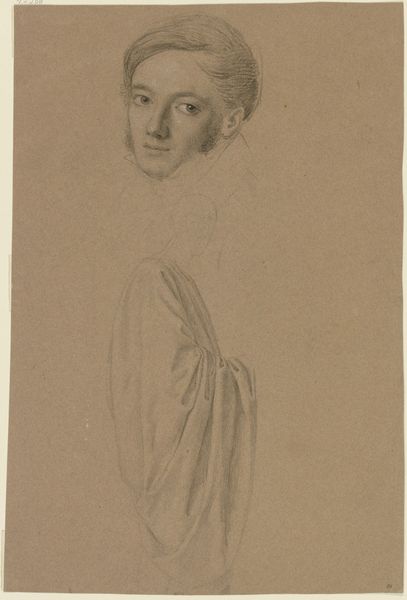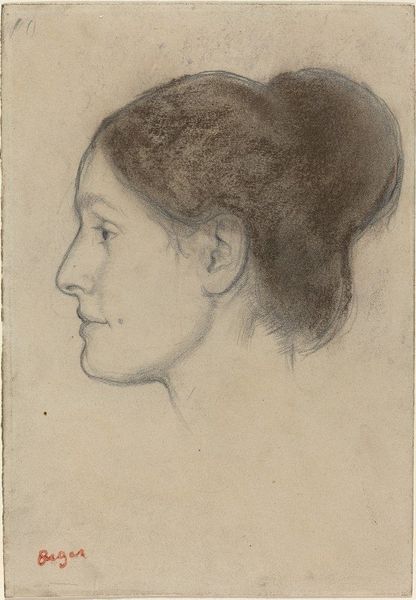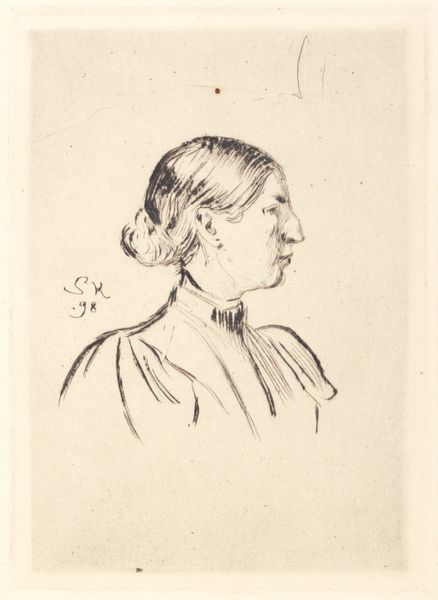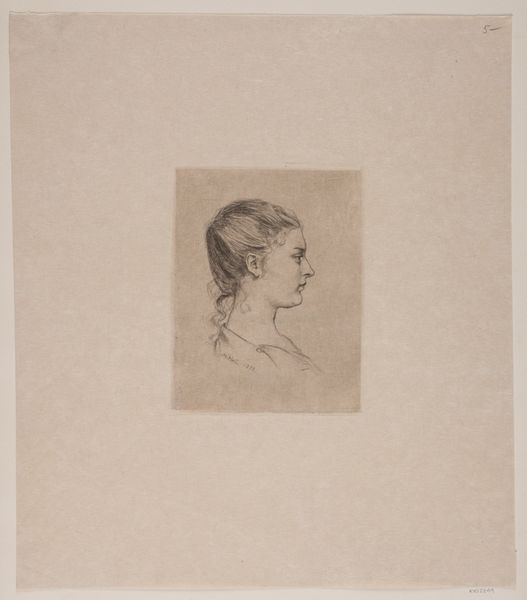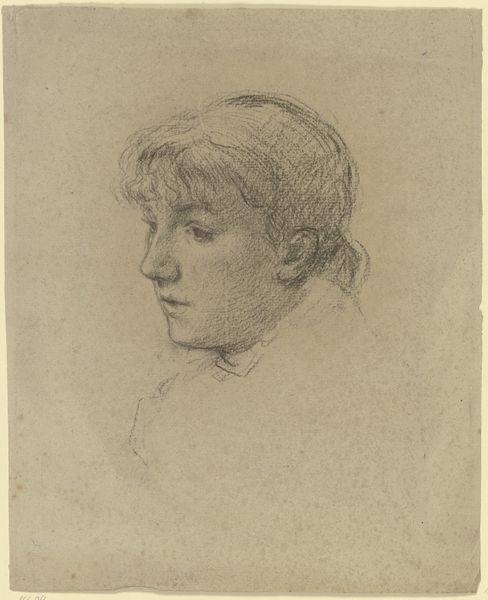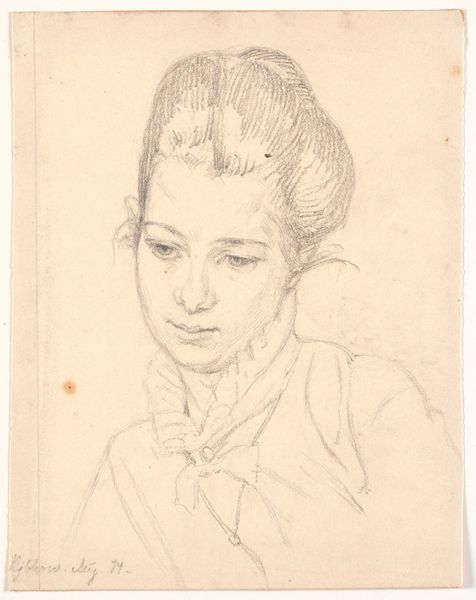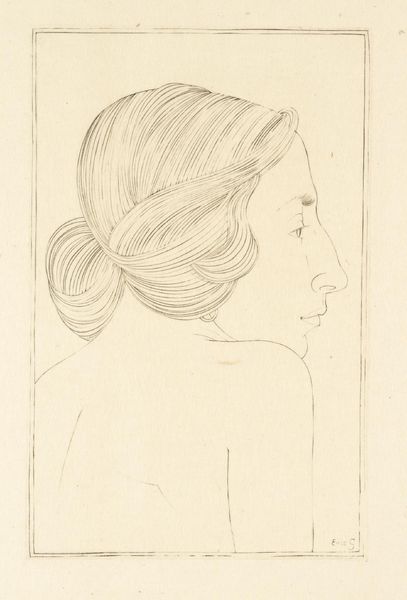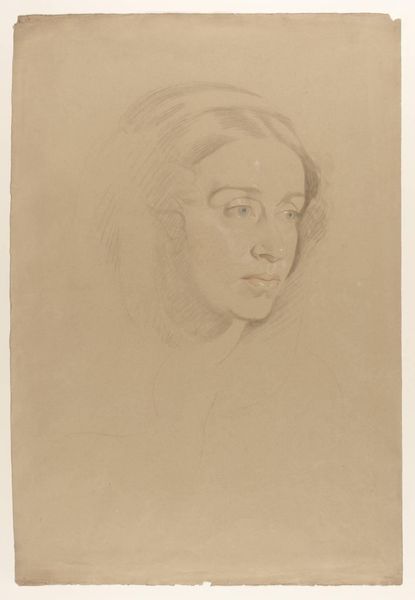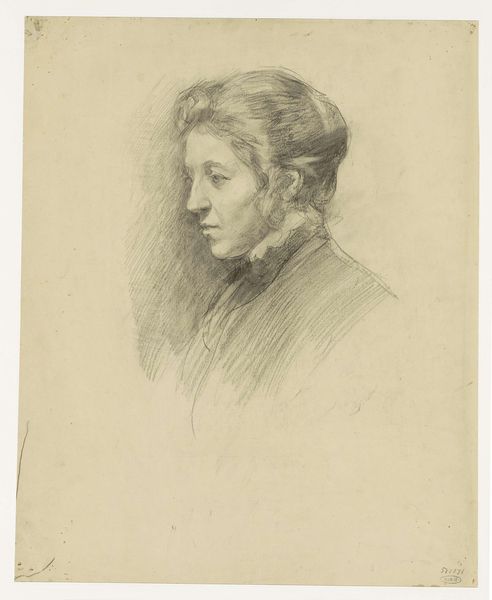
Portræt af Suzette Kathrine Skovgaard (gift Holten) 1856 - 1933
0:00
0:00
drawing, pencil
#
portrait
#
drawing
#
pencil drawing
#
pencil
#
portrait drawing
#
academic-art
#
realism
Dimensions: 204 mm (height) x 144 mm (width) (bladmaal)
Curator: Joakim Skovgaard’s pencil drawing, "Portræt af Suzette Kathrine Skovgaard (gift Holten)," made sometime between 1856 and 1933, presents a compelling portrait of a woman in profile. The drawing is currently held at the SMK, the Statens Museum for Kunst. Editor: Immediately, I'm struck by this incredible quietude. It feels very intimate, very...studied. Like catching someone lost in their own thoughts but with incredible skill and care. You can almost feel the grain of the paper, see the slow building of shadows. Curator: That "studied" feeling is really important. Academic art valued close observation and technical mastery, but what I see here goes beyond mere technical exercise. Consider the paper itself - its availability and cost at the time, the way its texture interacted with the pencil lead... these materials played a key role in determining the outcome of the work. Also this drawing represents skilled, paid labor of an artist whose economic success and social mobility was intimately bound with the artwork production and distribution networks. Editor: Absolutely! It feels intensely personal as well. Even though it’s a portrait, the details that AREN'T there, the unfinished quality of the torso, adds so much. Her expression is so focused, so internalized... It pulls you in. It is as if the unfinished sketch itself reveals not just her likeness, but her ephemeral presence and transient self, the woman on the brink of the 20th century. Curator: And think about the act of drawing itself in that period. Pencil portraits became increasingly common, offering a relatively accessible and affordable means of capturing likenesses for families of the rising middle class. The increasing consumption of those pencil portraits, and the stories such portraits communicated! Editor: It becomes almost like a historical artifact of evolving identities and visual representations. It also strikes me that there's so much blank space here – the void that highlights not just the person but the relationship that enabled the art. Almost as if Suzette, or the spirit she evokes, can vanish as readily as it appeared into the artists imagination. Curator: Yes, it also underlines the commodification of images and identity. We must also remember the agency of the artist involved here: his own reputation building, and marketing in the complex system of patronage and artistic display that defined his success. Editor: The layers continue to peel away. Seeing it this way, both artist and subject exist within a moment and material context, yet each line speaks to the heart beyond its history. Curator: It's a complex interplay of intent, skill, material conditions, and social factors which is just very gratifying to behold!
Comments
No comments
Be the first to comment and join the conversation on the ultimate creative platform.

